Punjab Festivals: A Year-Round Celebration of Culture and Tradition

Welcome to the vibrant land of Punjab, a place where the calendar is as colorful as its fields of mustard flowers, and the air is always jubilant with festivity. Punjab, the ‘Land of Five Rivers,’ is not just known for its agricultural prosperity and hearty cuisine, but also for its spirited festivals that mark the essence of its cultural heritage. From the golden fields swaying during Baisakhi to the winter bonfires of Lohri, Punjab’s festivals are a tapestry of joy, devotion, and communal harmony.
As you embark on this festive journey, let us guide you through the cavalcade of Punjab’s most cherished celebrations, exploring the history, traditions, and modern-day festivities. Whether you’re planning to visit the revered Golden Temple during Diwali or spin to the rhythm of Giddha during Teeyan, this guide is your gateway to fostering a deep connection with Punjab’s living culture and vibrant spirit.
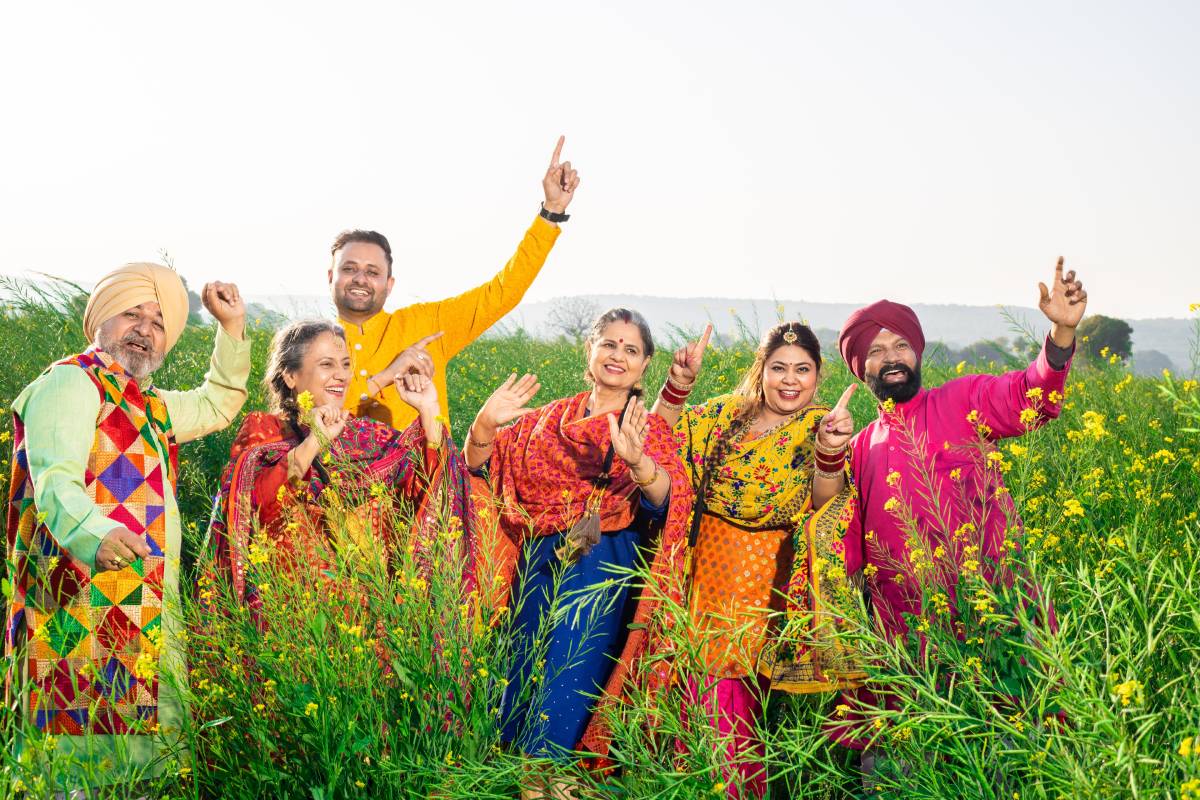
The Spring Herald: Baisakhi
Baisakhi is not merely a day on the calendar; it’s a jubilant emotion that encapsulates the heart and soul of Punjab. As the warm breeze of April kisses the fields, the farmers of Punjab, dressed in vibrant hues, with turbans and dupattas fluttering like flags of celebration, prepare for a day of dancing, feasting, and merry-making. Singing traditional folk songs that tell tales of valor, love, and social harmony, they gather in melas (fairs) and open fields to relish the success of their toil and the promise of prosperous times ahead.
In the city of Amritsar, the Baisakhi festival is a sight to behold. The mighty Golden Temple, with its gilded domes shining under the sun, becomes the epicenter of divine celebration. Here, throngs of devotees partake in Seva (selfless service), bathing the temple with their faith and reinforcing the tenets of Sikhism—equality, altruism, and community welfare. You can immerse in the tranquility of the temple, partaking in the Langar— a communal meal served to all, regardless of religion or background.
The mirth of Baisakhi also brings forth the rustic sports of Punjab. Watch locals engage in friendly competitions of kabaddi, wrestling (kushti), and tug of war. It’s an opportunity to witness the raw, unadulterated strength that the sons and daughters of this soil exude. At this time, Punjab’s air resonates with the rhythms of dhol and the claps of folk songs, as giddha and bhangra performances animate every corner of the state. The vivacious moves and high-spirited beats are contagious, coaxing every onlooker into the circle of celebration.
For those enchanted by Punjabi culture, Baisakhi is the perfect time to explore the villages of Punjab. Participate in the festivities, get adorned with intricate henna designs, and savor the taste of Punjab with dishes like Makki di Roti and Sarson da Saag. A visit during Baisakhi promises a cultural immersion that transcends the ordinary, with every sense regaled by the sights, sounds, and tastes of this jubilant occasion.
As night falls, the Baisakhi fervor continues with bonfires around which families and friends gather, sharing stories and enjoying succulent sweets like Gajak and Jaggery. Fireworks adorn the Punjabi sky, symbols of the vibrant life and inexhaustible spirit of its people, painting the horizon with myriad colors.
Baisakhi indeed offers not just a glimpse, but a wholehearted experience of the cultural exuberance of Punjab. Whether you’re meandering through the bustling bazaars, beside the golden wheat fields, or within the sacred precincts of the gurudwaras, Baisakhi ensnares the heart with its inclusive and resplendent ethos. It is a testament to a heritage that prides itself on its agricultural roots and its hearty embrace of life’s joys.
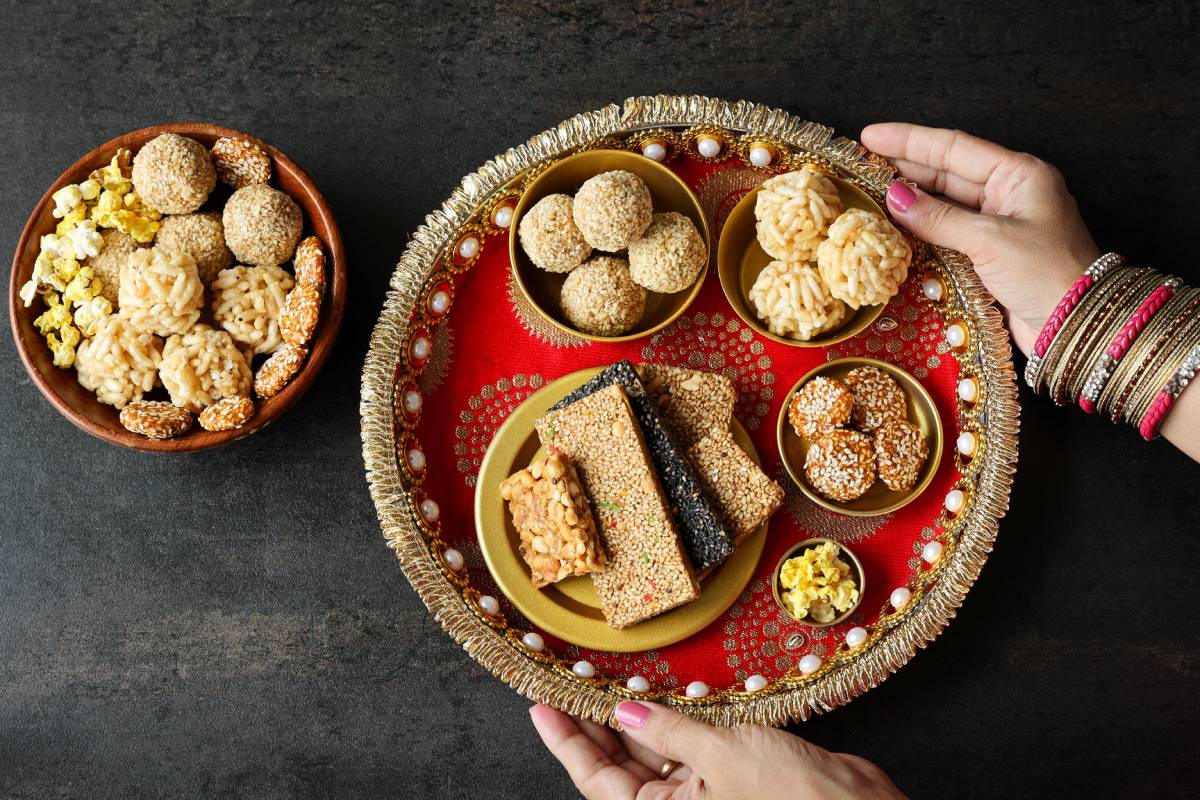
Lohri: The Warm Embers of Punjabi Winter
As the chill of January sets in, the land of Punjab prepares for Lohri, the winter festival that commemorates the passing of the winter solstice. Lohri is an embodiment of warmth and elation, drawing everyone together to celebrate the end of the coldest days. In every Punjabi home, you can feel the heartwarming embrace of this festival, as the scent of roasted sesame, puffed rice, and molten jaggery from the traditional Lohri sweets—gajak and rewari—spill into the air, blending with the laughter and banter of family and friends.
At the heart of Lohri celebrations is the bonfire, towering and crackling, around which people gather, tossing puffed rice, popcorn, and other munchies into the flames as an offering to the fire god, Agni. This ritual symbolizes a prayer to the almighty for prosperity and an abundant harvest. The fire also serves as a communal gathering spot where the reverberations of the dhol give rise to impromptu bhangra performances and the rhythmic folk songs dedicated to Dulha Bhatti, a legendary Punjabi hero.
The flickering flames of Lohri are not just mere fire; they are symbols of hope and a beacon summoning the spring. It is a time for new couples and newborns to seek blessings as they step into their new lives. The evening reverberates with an old-world charm as tales of yore are narrated, forging new memories while snow-kissed winds whisper outside.
For travelers, Lohri presents the perfect tapestry of Punjab’s rich cultural mores. It’s an occasion that prompts spontaneous joy, where anyone can join the dance circle and move to the beat of the drums, feeling the spirit of Punjab coursing through their veins. From the embellished attires flaunting vibrant Phulkari embroidery to the sumptuous feast laden with Sarson da Saag and Makke di Roti, Lohri is indeed a carnival of sensory delights.
For anyone looking to experience Punjab in its genuine spirit, Lohri is a doorway into the heart of Punjabi culture, where tradition sings, the hearth warms, and the heart celebrates. The festival leaves you with not only a serenade of folklores enclosed in the embers of the bonfire but also imprints of a community that finds joy in unity and celebrates the simplest moments of life with unparalleled pomp and splendor.
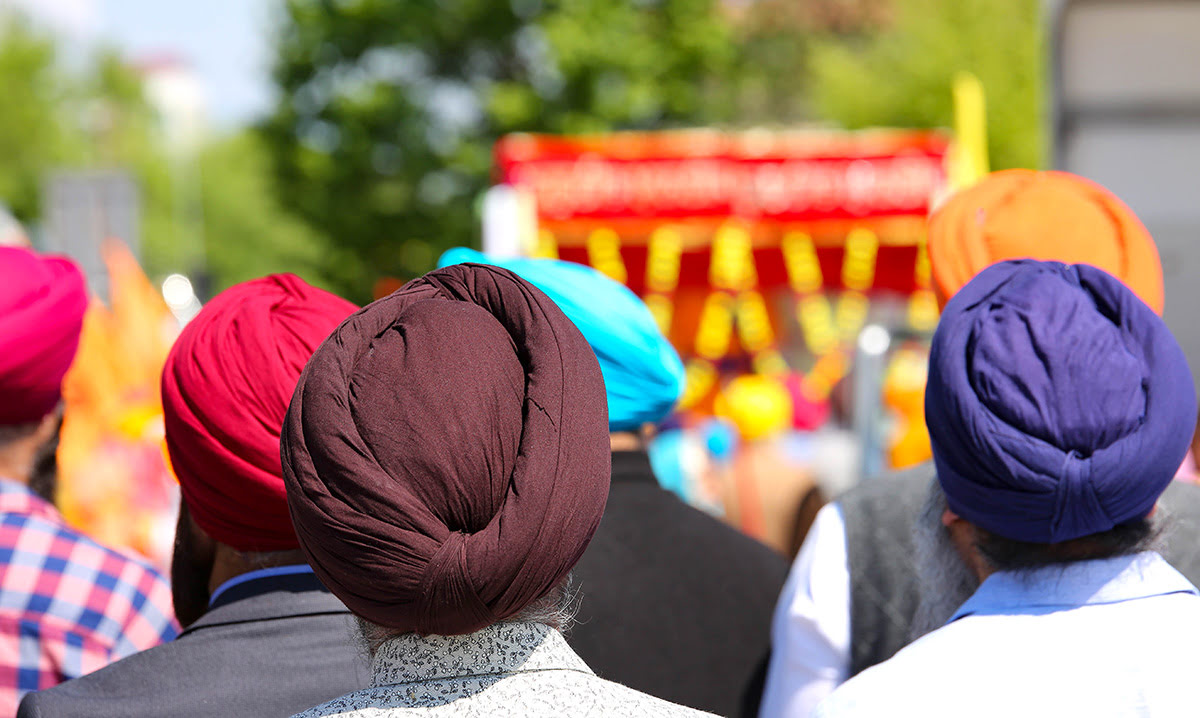
Holi: Punjab’s Carnival of Colors
As spring unfurls its colors across the vibrant landscapes of Punjab, Holi, the festival of colors, makes its grand entrance. It’s a time when the social fabric of Punjab is painted with the hues of unity, love, and rejuvenation. Known regionally as Hola Mohalla, particularly by the Sikh community, this festival takes on an additional dimension of martial glory and spiritual zest.
In the historic town of Anandpur Sahib, Hola Mohalla coincides with Holi, transforming the celebration into a grand display of Sikh valor and martial arts. Turbaned warriors in traditional attire, brandishing swords and spears, engage in mock battles, showcasing their dexterity and the ancient art of Gatka, a Sikh martial technique. The air thrums with the power of traditional drums and the spectacle of daredevilry on horseback, captivating visitors with Punjab’s martial history and pride.
Amidst this display of gallantry, the playful aspects of Holi intertwine, as children and adults alike splash colors and water, dissolving differences and weaving the tapestry of shared joy. The festival is also a feast for the gastronomically inclined—with stalls teeming with traditional sweets like gujiya, malpuas, and a heavenly pour of thandai, often infused with fragrant spices and rose petals. As you wander through the celebratory chaos, don’t be surprised if a local, with a smile and handful of colors, invites you to join in the revelry.
The evening of Holi in Punjab brings with it a different kind of warmth. Community bonfires, known as Holika Dahan, become centers of ritual and reflection, where people gather to sing and dance, often throwing in dried leaves and twigs to signify the burning of evil spirits and ushering in good vibes for the upcoming year. The glow of the flames against the night sky creates an ambiance of mystique and mysticism, embracing all in the spirit of togetherness and harmony.
Holi in Punjab is not merely about the merriment; it’s a larger celebration of life. Each smear of color is a prayer for happiness, each sweet a morsel of hope, and every embrace a testament to the indomitable spirit of Punjab, which resonates with the philosophy—the world is one big family.
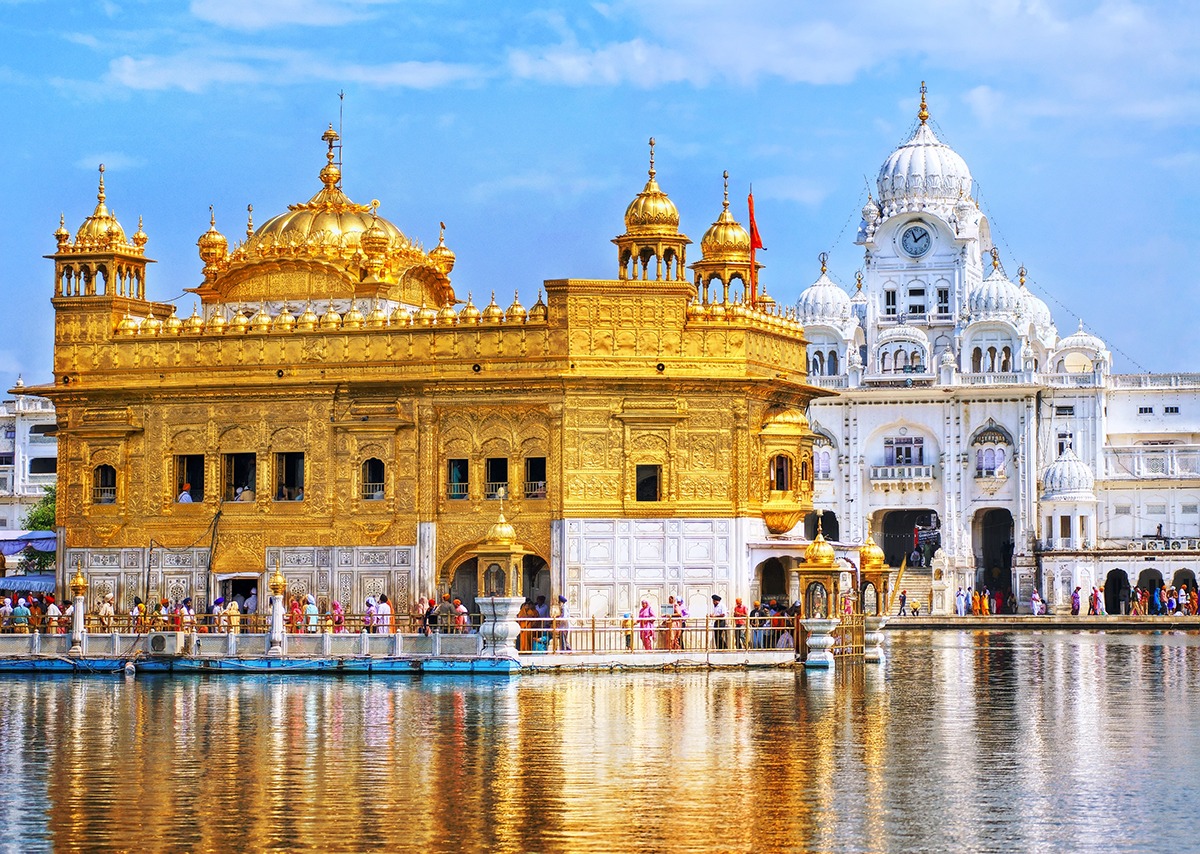
Diwali: A Symphony of Lights in Punjab
The luminescent festival of Diwali, or Deepavali, holds a special place in the heart of Punjab, as the region bursts into a dazzling array of lights signifying the victory of good over evil. Diwali in Punjab is not just an enchanting spectacle but is also infused with profound spiritual significance, especially in the city of Amritsar which becomes a vision swathed in golden luminescence during this time.
The centerpiece of Diwali’s celebrations in Punjab is the resplendent Golden Temple, which seems to float amidst reflections on the serene waters of the surrounding lake. Bathed in the glow of countless diyas (oil lamps), the temple’s splendor during Diwali is a sight to behold and is symbolic of the light within every heart, guiding the way to divinity and peace. The landscape around the temple radiates with the warmth of lights, and illuminated kandeels (paper lanterns) soar into the night sky, painting it with aspirations and dreams.
As you traverse the heritage-rich streets of Amritsar, the festival’s majestic aura envelops you. Fireworks embroider the skyline with vibrant patterns while the fragrance of incense blends with the cool, crisp air. Marketplaces are aflush with activity as shops, and homefronts dazzle with intricate rangoli designs and shimmering lights, and the echoes of hymns from the gurudwaras harmonize with the jubilant crackers.
Diwali in Punjab is also synonymous with affluence and opulence. It’s a time when families come together to exchange gifts, indulge in rich foods, and don traditional attire befitting the festival’s grandeur. Sweets like jalebis and barfis are in high demand, relished by the young and old alike. Shop for traditional handicrafts, Phulkari work, juttis, or treated to Amritsari kulchas as part of the festival’s gastronomic journey.
The festival’s ethos, rooted in religious and socio-cultural traditions, underscores themes of renewal, love, and celebration of life itself. Diwali in Punjab opens a window to the state’s soul, revealing a community united in celebration, brimming with festive spirits and age-old traditions carried on with fervent zeal.
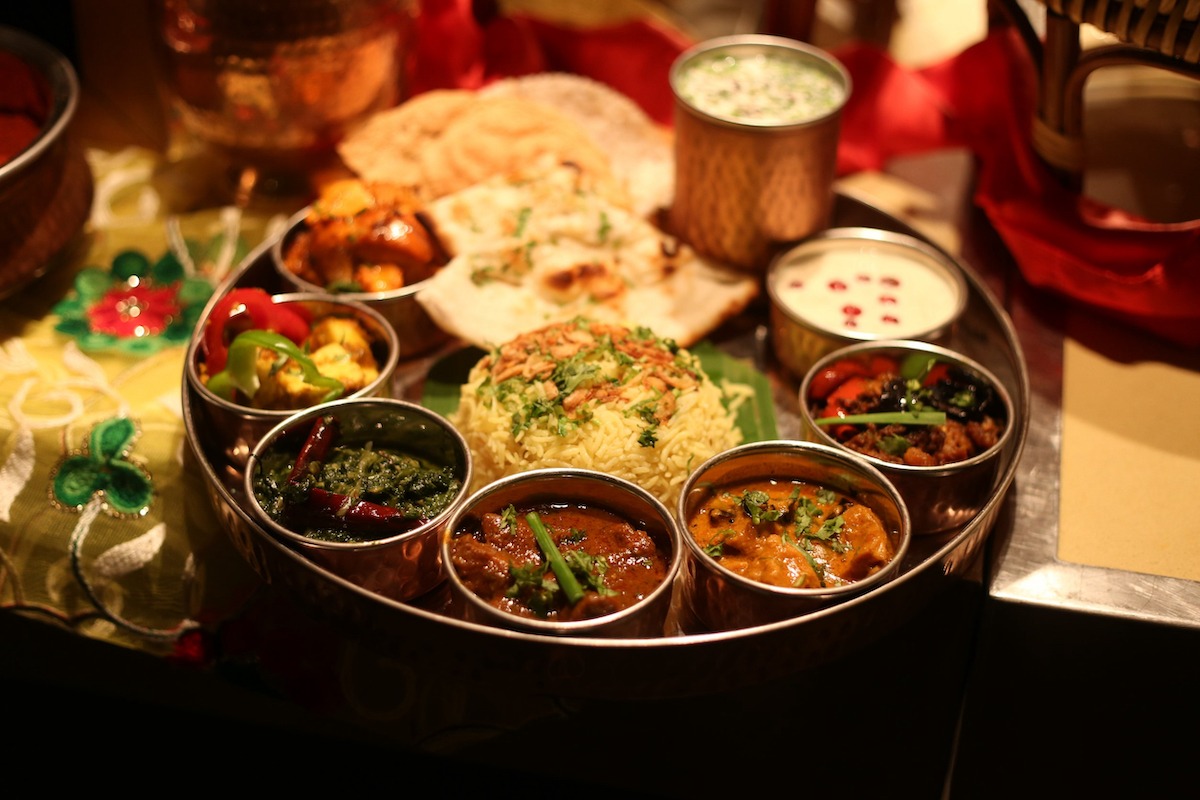
Maghi: The Dawn of New Beginnings in Punjab
As the chill of winter begins to wane, the people of Punjab gear up for Maghi, the festival that marks the beginning of the month of Magh, heralding longer days and the onset of warmer weather. It’s an important day, especially in the Sikh tradition, as it commemorates the sacrifice of the Forty Immortals, the brave followers of Guru Gobind Singh who laid down their lives at the Battle of Muktsar. In Maghi, the spirit of valor and tribute runs deep as Punjab pays homage to its heroes.
Muktsar, a town with great historical significance, becomes the focal point of the celebrations. Here, devotees take a sacred dip in the holy waters of Muktsar Sahib, cleansing themselves of worldly woes and seeking blessings for a prosperous year. The town awakens to the hum of prayers and the unity of thousands who come together to honor the legacy of the bravehearts with the belief that their gallantry shall inspire generations to come.
Fairs are set up, and the skies mirror the jubilant mood on the ground with vibrant kites soaring high as part of the Maghi festivities. Traditional Punjabi delicacies and sweets mark the occasion, with people breaking bread together, sharing meals of kheer cooked in sugarcane juice and khichdi, which hold a special place in the day’s ceremonies. These shared meals reinforce Punjab’s age-old ethos of community fellowship and shared prosperity.
While largely a solemn remembrance, Maghi is also an affirmation of life and its continuous cycle. It is a time when the agrarian community looks ahead to the upcoming harvest, and folksongs envisaging bounteous yields fill the air. Elders narrate tales of yore, imparting wisdom and continuity to the assembled youth, ensuring that the fabric of Punjab’s rich heritage remains unbroken and vibrant.
Visiting Punjab during Maghi infuses one with a sense of historic pride and present delight. It’s an invitation to partake in the state’s profound narrative, where each moment is a recognition of the past and a step towards a hopeful future. Maghi embodies Punjab’s resilience, reflecting a people firmly rooted in their history, even as they embrace the new chapters of life.
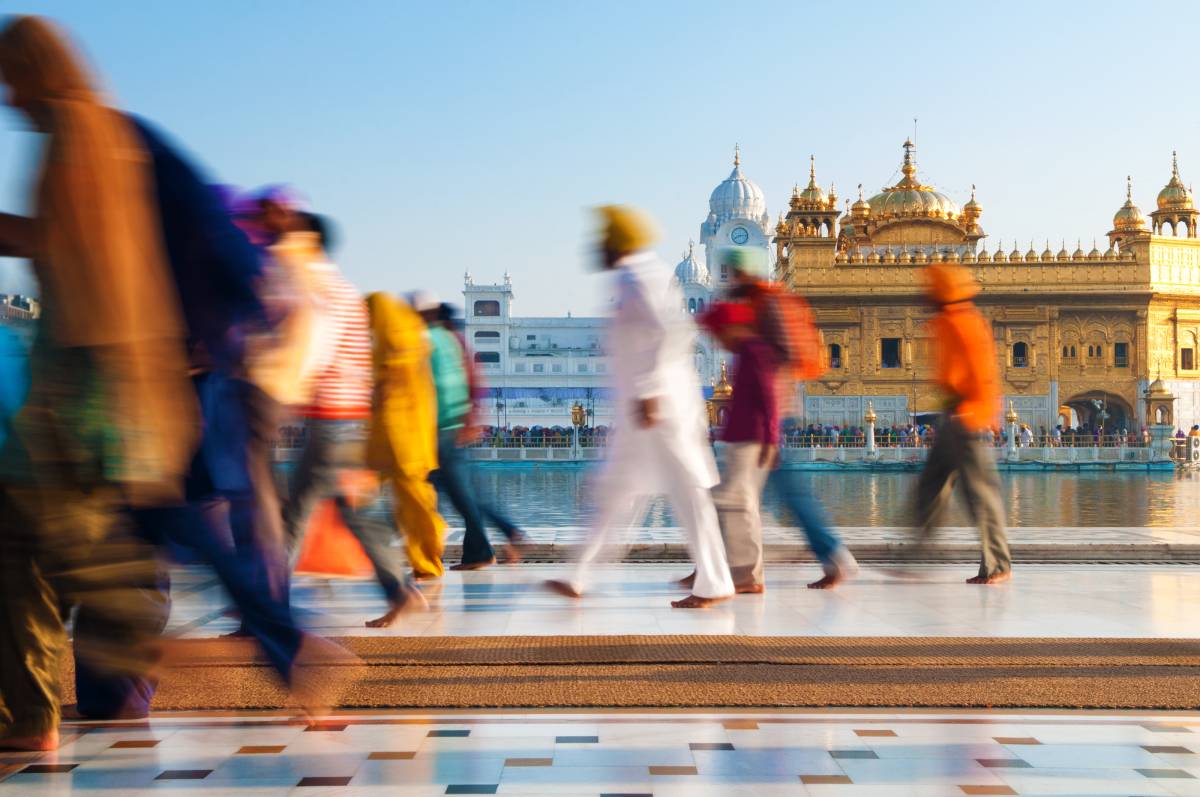
Essential Travel Tips for Navigating Punjab’s Festive Terrain
When diving into the jubilant festivals of Punjab, it’s crucial to equip yourself with practical travel know-how for a seamless and enriching experience. Understanding local customs, navigating transport, and knowing what to pack can transform your journey into a comfortable adventure soaked in the essence of Punjab.
The most important tip for festival-goers is to book accommodations well in advance, as places like Amritsar and Anandpur Sahib see a surge in visitors during festivals like Diwali and Holi. Familiarize yourself with local transport options—buses, auto-rickshaws, and taxis are readily available, but during festival time, consider hiring a private vehicle for flexibility and ease.
Punjab experiences extreme weather, with scorching summers and biting winters. Pack accordingly, with cotton outfits for the heat during Baisakhi, and warm layers for the chillier Lohri nights. A sturdy pair of shoes will serve you well as you explore the rural fairs and village festivities. And don’t forget to pack a universal power adapter for your gadgets, and a good quality camera to capture the colorful exuberance of Punjab’s festivals!
While English is widely understood in urban centers, a few phrases in Punjabi can go a long way in rural areas. Remember, the spirit of Punjab is warmth and hospitality, so embrace local interactions, and you’ll find assistance and camaraderie at every turn.
Top Picks for Festive Accommodations in Punjab
Choosing the right place to stay can enrich your travel experience by providing comfort and a taste of local life.
In the heart of Amritsar, the Hyatt Regency Amritsar provides luxury and proximity to the Golden Temple, especially resplendent during Diwali. For a more culturally immersive stay, the Sadda Pind Resort offers traditional Punjabi village vibes with modern amenities.
If you’re visiting during Maghi or Baisakhi, consider the boutique charm of WelcomHeritage Ranjit Vilas in Jalandhar, which provides an ideal base to discover the nearby fairs and activities. For those attending Holi festivities, the heritage-rich hotels in Anandpur Sahib, like The Anand at The Satluj, promise an unforgettable stay with spectacular views of the jubilant celebrations.
Throughout Punjab, reliable options like the Radisson Blu hotels offer comforting consistency, with central locations in major cities like Ludhiana and Mohali, ensuring you don’t miss out on the hustle and bustle of the local festive spirit.
Agoda.com boasts an extensive range of accommodations, from luxurious five-star hotels to charming guesthouses, each offering unique glimpses into the heart of Punjab’s vibrant culture. Be sure to check guest reviews, proximity to festival venues, and book your stay early to secure your spot in the midst of the festivities.
You may also like

Discover the best places to eat in Kuching with our ultimate food guide. From Laksa Sarawak to Kolo Mee, explore the top restaurants, cafes, and night markets for an unforgettable culinary experience.

Explore the best places to stay in Chiayi with our ultimate guide to Alishan accommodation. Find hotels, B&Bs, luxury stays, and more.
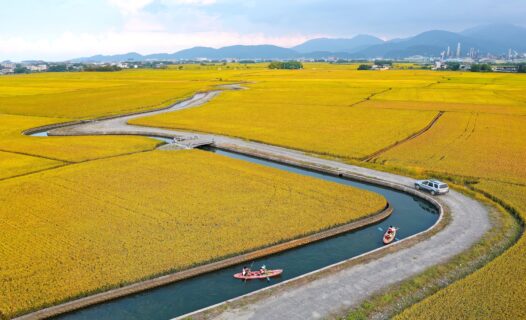
Discover the top must-visit attractions in Yilan, Taiwan, including natural hot springs, night markets, and scenic spots. Plan your perfect trip to Yilan with our comprehensive guide.
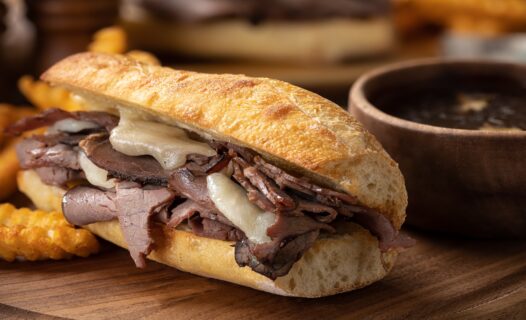
Discover the best eats and hidden culinary gems in Los Angeles with our ultimate foodie's guide. Explore top restaurants, street food, unique dishes, and more!

Discover the wonders of India with the new 30-day free e-Tourist visa available for Thai travelers. Plan your trip, explore top destinations, and enjoy a seamless visa application process from July 1, 2024, to December 31, 2024. Find out how to apply, top attractions to visit, and practical travel tips in our comprehensive guide.
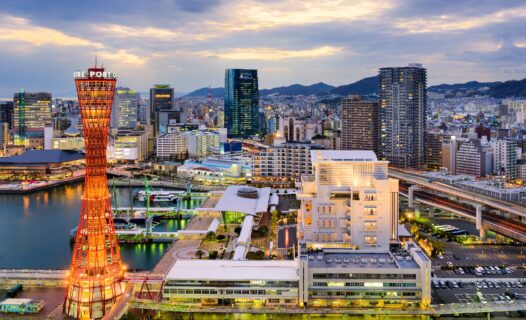
Discover the best attractions and hidden treasures of Kobe in this ultimate travel guide. From cultural landmarks to culinary delights, explore Kobe like never before.
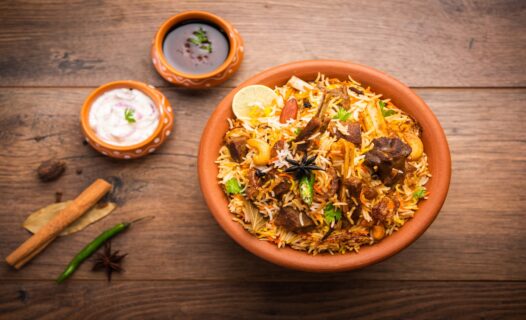
Explore the ultimate list of the best restaurants in Mumbai. From fine dining to street food, discover where to eat in Mumbai and experience the city's rich culinary culture.
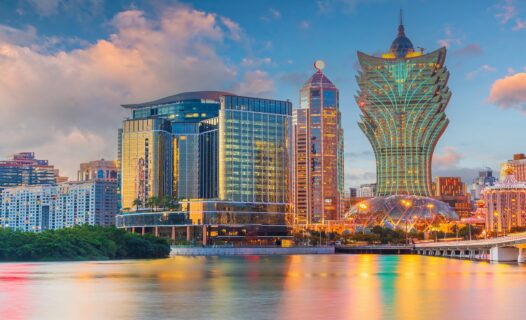
Discover the top attractions and activities in Macau. From historic sites to exciting nightlife, this guide covers everything you need to see and do in Macau.

Discover the best places to eat in Goa with our comprehensive guide. From beach shacks to fine dining, experience authentic Goan cuisine.

Discover the ultimate guide to Phuket, Thailand's tropical paradise. Explore breathtaking beaches, cultural sites, adventurous tours, and delicious cuisine.
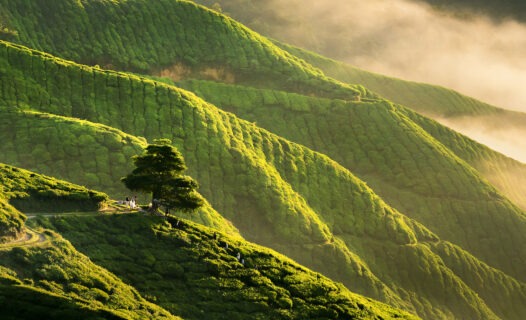
Discover the best things to do in Cameron Highlands, Malaysia with our ultimate travel guide. Explore tea plantations, strawberry farms, adventure trails, and more! Plan your trip now.
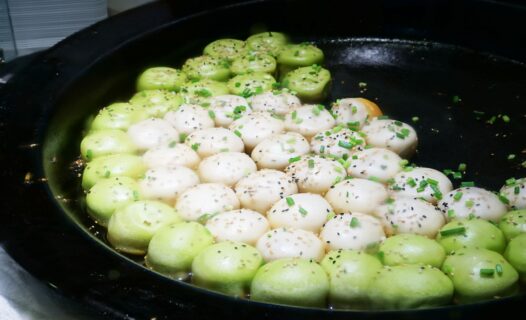
Embark on a culinary adventure in Yokohama Chinatown. Discover the best lunch spots, authentic Chinese dishes, and local dining experiences. Plan your food tour now!
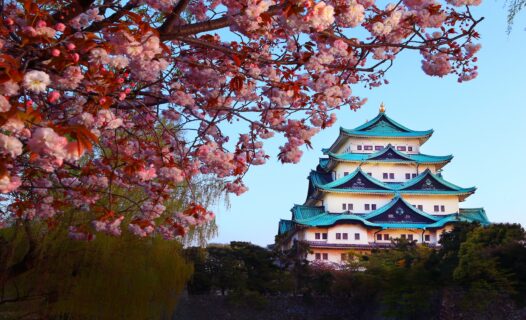
Discover the best luxury hotels in Nagoya with our comprehensive guide. Explore top-tier accommodations, amenities, exclusive experiences, and insider tips for an unforgettable stay.

Explore the best restaurants in New Delhi and NCR, from fine dining spots to street food havens. Find out where to eat in Delhi for an unforgettable culinary experience.
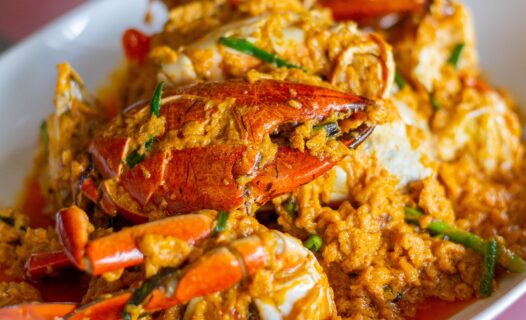
Discover the must-visit food spots in Hat Yai with our comprehensive culinary guide. From bustling night markets to serene cafes, find out where to eat in Hat Yai.

Explore the best attractions, activities, and experiences in Hua Hin and Cha-am with our comprehensive travel guide. Discover hidden gems, cultural landmarks, and more.
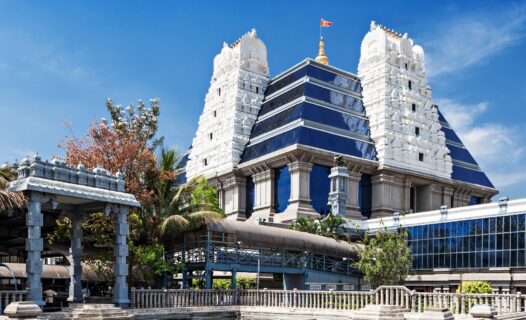
Explore the best free activities and attractions in Bangalore with our comprehensive travel guide. Enjoy the Garden City without breaking the bank.
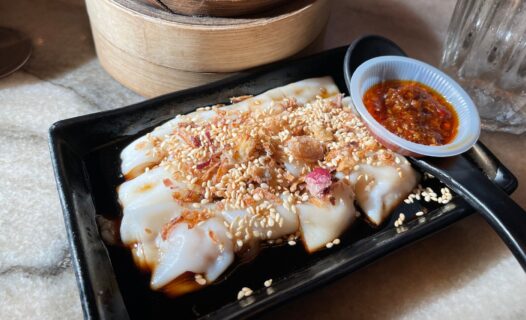
Discover the best eats in Ipoh with our ultimate food adventure guide. From must-try delicacies to hidden gems, experience the authentic tastes of Ipoh.

Discover the best attractions, activities, and must-see places in Vung Tau with our in-depth travel guide. Your ultimate checklist for an unforgettable trip!
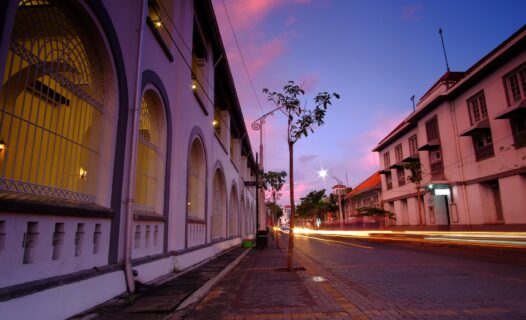
Discover how to experience Indonesia's Independence Day in Semarang with this travel guide. Explore cultural events, parades, culinary delights, and more on Hari Kemerdekaan RI.
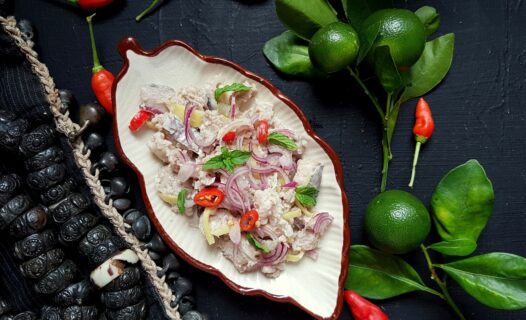
Discover the best dining spots in Kota Kinabalu, from delicious street food to luxurious fine dining. Explore local cuisines, must-try dishes, and more.

Last Updated: February 21, 2024
Welcome to the vibrant land of Punjab, a place where the calendar is as colorful as its fields of mustard flowers, and the air is always jubilant with festivity. Punjab, the ‘Land of Five Rivers,’ is not just known for its agricultural prosperity and hearty cuisine, but also for its spirited festivals that mark the essence of its cultural heritage. From the golden fields swaying during Baisakhi to the winter bonfires of Lohri, Punjab’s festivals are a tapestry of joy, devotion, and communal harmony.
As you embark on this festive journey, let us guide you through the cavalcade of Punjab’s most cherished celebrations, exploring the history, traditions, and modern-day festivities. Whether you’re planning to visit the revered Golden Temple during Diwali or spin to the rhythm of Giddha during Teeyan, this guide is your gateway to fostering a deep connection with Punjab’s living culture and vibrant spirit.

The Spring Herald: Baisakhi
Baisakhi is not merely a day on the calendar; it’s a jubilant emotion that encapsulates the heart and soul of Punjab. As the warm breeze of April kisses the fields, the farmers of Punjab, dressed in vibrant hues, with turbans and dupattas fluttering like flags of celebration, prepare for a day of dancing, feasting, and merry-making. Singing traditional folk songs that tell tales of valor, love, and social harmony, they gather in melas (fairs) and open fields to relish the success of their toil and the promise of prosperous times ahead.
In the city of Amritsar, the Baisakhi festival is a sight to behold. The mighty Golden Temple, with its gilded domes shining under the sun, becomes the epicenter of divine celebration. Here, throngs of devotees partake in Seva (selfless service), bathing the temple with their faith and reinforcing the tenets of Sikhism—equality, altruism, and community welfare. You can immerse in the tranquility of the temple, partaking in the Langar— a communal meal served to all, regardless of religion or background.
The mirth of Baisakhi also brings forth the rustic sports of Punjab. Watch locals engage in friendly competitions of kabaddi, wrestling (kushti), and tug of war. It’s an opportunity to witness the raw, unadulterated strength that the sons and daughters of this soil exude. At this time, Punjab’s air resonates with the rhythms of dhol and the claps of folk songs, as giddha and bhangra performances animate every corner of the state. The vivacious moves and high-spirited beats are contagious, coaxing every onlooker into the circle of celebration.
For those enchanted by Punjabi culture, Baisakhi is the perfect time to explore the villages of Punjab. Participate in the festivities, get adorned with intricate henna designs, and savor the taste of Punjab with dishes like Makki di Roti and Sarson da Saag. A visit during Baisakhi promises a cultural immersion that transcends the ordinary, with every sense regaled by the sights, sounds, and tastes of this jubilant occasion.
As night falls, the Baisakhi fervor continues with bonfires around which families and friends gather, sharing stories and enjoying succulent sweets like Gajak and Jaggery. Fireworks adorn the Punjabi sky, symbols of the vibrant life and inexhaustible spirit of its people, painting the horizon with myriad colors.
Baisakhi indeed offers not just a glimpse, but a wholehearted experience of the cultural exuberance of Punjab. Whether you’re meandering through the bustling bazaars, beside the golden wheat fields, or within the sacred precincts of the gurudwaras, Baisakhi ensnares the heart with its inclusive and resplendent ethos. It is a testament to a heritage that prides itself on its agricultural roots and its hearty embrace of life’s joys.

Lohri: The Warm Embers of Punjabi Winter
As the chill of January sets in, the land of Punjab prepares for Lohri, the winter festival that commemorates the passing of the winter solstice. Lohri is an embodiment of warmth and elation, drawing everyone together to celebrate the end of the coldest days. In every Punjabi home, you can feel the heartwarming embrace of this festival, as the scent of roasted sesame, puffed rice, and molten jaggery from the traditional Lohri sweets—gajak and rewari—spill into the air, blending with the laughter and banter of family and friends.
At the heart of Lohri celebrations is the bonfire, towering and crackling, around which people gather, tossing puffed rice, popcorn, and other munchies into the flames as an offering to the fire god, Agni. This ritual symbolizes a prayer to the almighty for prosperity and an abundant harvest. The fire also serves as a communal gathering spot where the reverberations of the dhol give rise to impromptu bhangra performances and the rhythmic folk songs dedicated to Dulha Bhatti, a legendary Punjabi hero.
The flickering flames of Lohri are not just mere fire; they are symbols of hope and a beacon summoning the spring. It is a time for new couples and newborns to seek blessings as they step into their new lives. The evening reverberates with an old-world charm as tales of yore are narrated, forging new memories while snow-kissed winds whisper outside.
For travelers, Lohri presents the perfect tapestry of Punjab’s rich cultural mores. It’s an occasion that prompts spontaneous joy, where anyone can join the dance circle and move to the beat of the drums, feeling the spirit of Punjab coursing through their veins. From the embellished attires flaunting vibrant Phulkari embroidery to the sumptuous feast laden with Sarson da Saag and Makke di Roti, Lohri is indeed a carnival of sensory delights.
For anyone looking to experience Punjab in its genuine spirit, Lohri is a doorway into the heart of Punjabi culture, where tradition sings, the hearth warms, and the heart celebrates. The festival leaves you with not only a serenade of folklores enclosed in the embers of the bonfire but also imprints of a community that finds joy in unity and celebrates the simplest moments of life with unparalleled pomp and splendor.

Holi: Punjab’s Carnival of Colors
As spring unfurls its colors across the vibrant landscapes of Punjab, Holi, the festival of colors, makes its grand entrance. It’s a time when the social fabric of Punjab is painted with the hues of unity, love, and rejuvenation. Known regionally as Hola Mohalla, particularly by the Sikh community, this festival takes on an additional dimension of martial glory and spiritual zest.
In the historic town of Anandpur Sahib, Hola Mohalla coincides with Holi, transforming the celebration into a grand display of Sikh valor and martial arts. Turbaned warriors in traditional attire, brandishing swords and spears, engage in mock battles, showcasing their dexterity and the ancient art of Gatka, a Sikh martial technique. The air thrums with the power of traditional drums and the spectacle of daredevilry on horseback, captivating visitors with Punjab’s martial history and pride.
Amidst this display of gallantry, the playful aspects of Holi intertwine, as children and adults alike splash colors and water, dissolving differences and weaving the tapestry of shared joy. The festival is also a feast for the gastronomically inclined—with stalls teeming with traditional sweets like gujiya, malpuas, and a heavenly pour of thandai, often infused with fragrant spices and rose petals. As you wander through the celebratory chaos, don’t be surprised if a local, with a smile and handful of colors, invites you to join in the revelry.
The evening of Holi in Punjab brings with it a different kind of warmth. Community bonfires, known as Holika Dahan, become centers of ritual and reflection, where people gather to sing and dance, often throwing in dried leaves and twigs to signify the burning of evil spirits and ushering in good vibes for the upcoming year. The glow of the flames against the night sky creates an ambiance of mystique and mysticism, embracing all in the spirit of togetherness and harmony.
Holi in Punjab is not merely about the merriment; it’s a larger celebration of life. Each smear of color is a prayer for happiness, each sweet a morsel of hope, and every embrace a testament to the indomitable spirit of Punjab, which resonates with the philosophy—the world is one big family.

Diwali: A Symphony of Lights in Punjab
The luminescent festival of Diwali, or Deepavali, holds a special place in the heart of Punjab, as the region bursts into a dazzling array of lights signifying the victory of good over evil. Diwali in Punjab is not just an enchanting spectacle but is also infused with profound spiritual significance, especially in the city of Amritsar which becomes a vision swathed in golden luminescence during this time.
The centerpiece of Diwali’s celebrations in Punjab is the resplendent Golden Temple, which seems to float amidst reflections on the serene waters of the surrounding lake. Bathed in the glow of countless diyas (oil lamps), the temple’s splendor during Diwali is a sight to behold and is symbolic of the light within every heart, guiding the way to divinity and peace. The landscape around the temple radiates with the warmth of lights, and illuminated kandeels (paper lanterns) soar into the night sky, painting it with aspirations and dreams.
As you traverse the heritage-rich streets of Amritsar, the festival’s majestic aura envelops you. Fireworks embroider the skyline with vibrant patterns while the fragrance of incense blends with the cool, crisp air. Marketplaces are aflush with activity as shops, and homefronts dazzle with intricate rangoli designs and shimmering lights, and the echoes of hymns from the gurudwaras harmonize with the jubilant crackers.
Diwali in Punjab is also synonymous with affluence and opulence. It’s a time when families come together to exchange gifts, indulge in rich foods, and don traditional attire befitting the festival’s grandeur. Sweets like jalebis and barfis are in high demand, relished by the young and old alike. Shop for traditional handicrafts, Phulkari work, juttis, or treated to Amritsari kulchas as part of the festival’s gastronomic journey.
The festival’s ethos, rooted in religious and socio-cultural traditions, underscores themes of renewal, love, and celebration of life itself. Diwali in Punjab opens a window to the state’s soul, revealing a community united in celebration, brimming with festive spirits and age-old traditions carried on with fervent zeal.

Maghi: The Dawn of New Beginnings in Punjab
As the chill of winter begins to wane, the people of Punjab gear up for Maghi, the festival that marks the beginning of the month of Magh, heralding longer days and the onset of warmer weather. It’s an important day, especially in the Sikh tradition, as it commemorates the sacrifice of the Forty Immortals, the brave followers of Guru Gobind Singh who laid down their lives at the Battle of Muktsar. In Maghi, the spirit of valor and tribute runs deep as Punjab pays homage to its heroes.
Muktsar, a town with great historical significance, becomes the focal point of the celebrations. Here, devotees take a sacred dip in the holy waters of Muktsar Sahib, cleansing themselves of worldly woes and seeking blessings for a prosperous year. The town awakens to the hum of prayers and the unity of thousands who come together to honor the legacy of the bravehearts with the belief that their gallantry shall inspire generations to come.
Fairs are set up, and the skies mirror the jubilant mood on the ground with vibrant kites soaring high as part of the Maghi festivities. Traditional Punjabi delicacies and sweets mark the occasion, with people breaking bread together, sharing meals of kheer cooked in sugarcane juice and khichdi, which hold a special place in the day’s ceremonies. These shared meals reinforce Punjab’s age-old ethos of community fellowship and shared prosperity.
While largely a solemn remembrance, Maghi is also an affirmation of life and its continuous cycle. It is a time when the agrarian community looks ahead to the upcoming harvest, and folksongs envisaging bounteous yields fill the air. Elders narrate tales of yore, imparting wisdom and continuity to the assembled youth, ensuring that the fabric of Punjab’s rich heritage remains unbroken and vibrant.
Visiting Punjab during Maghi infuses one with a sense of historic pride and present delight. It’s an invitation to partake in the state’s profound narrative, where each moment is a recognition of the past and a step towards a hopeful future. Maghi embodies Punjab’s resilience, reflecting a people firmly rooted in their history, even as they embrace the new chapters of life.

Essential Travel Tips for Navigating Punjab’s Festive Terrain
When diving into the jubilant festivals of Punjab, it’s crucial to equip yourself with practical travel know-how for a seamless and enriching experience. Understanding local customs, navigating transport, and knowing what to pack can transform your journey into a comfortable adventure soaked in the essence of Punjab.
The most important tip for festival-goers is to book accommodations well in advance, as places like Amritsar and Anandpur Sahib see a surge in visitors during festivals like Diwali and Holi. Familiarize yourself with local transport options—buses, auto-rickshaws, and taxis are readily available, but during festival time, consider hiring a private vehicle for flexibility and ease.
Punjab experiences extreme weather, with scorching summers and biting winters. Pack accordingly, with cotton outfits for the heat during Baisakhi, and warm layers for the chillier Lohri nights. A sturdy pair of shoes will serve you well as you explore the rural fairs and village festivities. And don’t forget to pack a universal power adapter for your gadgets, and a good quality camera to capture the colorful exuberance of Punjab’s festivals!
While English is widely understood in urban centers, a few phrases in Punjabi can go a long way in rural areas. Remember, the spirit of Punjab is warmth and hospitality, so embrace local interactions, and you’ll find assistance and camaraderie at every turn.
Top Picks for Festive Accommodations in Punjab
Choosing the right place to stay can enrich your travel experience by providing comfort and a taste of local life.
In the heart of Amritsar, the Hyatt Regency Amritsar provides luxury and proximity to the Golden Temple, especially resplendent during Diwali. For a more culturally immersive stay, the Sadda Pind Resort offers traditional Punjabi village vibes with modern amenities.
If you’re visiting during Maghi or Baisakhi, consider the boutique charm of WelcomHeritage Ranjit Vilas in Jalandhar, which provides an ideal base to discover the nearby fairs and activities. For those attending Holi festivities, the heritage-rich hotels in Anandpur Sahib, like The Anand at The Satluj, promise an unforgettable stay with spectacular views of the jubilant celebrations.
Throughout Punjab, reliable options like the Radisson Blu hotels offer comforting consistency, with central locations in major cities like Ludhiana and Mohali, ensuring you don’t miss out on the hustle and bustle of the local festive spirit.
Agoda.com boasts an extensive range of accommodations, from luxurious five-star hotels to charming guesthouses, each offering unique glimpses into the heart of Punjab’s vibrant culture. Be sure to check guest reviews, proximity to festival venues, and book your stay early to secure your spot in the midst of the festivities.
You may also like












